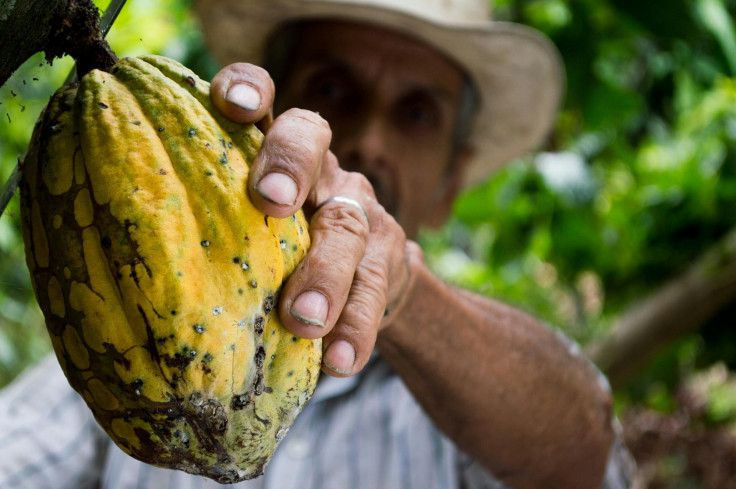
Over the past year, the price of cocoa has more than tripled, significantly impacting both consumers and small food manufacturers. These companies, which rely heavily on cocoa to produce chocolate, are grappling with unprecedented challenges due to soaring costs.
Historically, the cost of a metric tonne of cocoa hovered around $2,500. However, in April, cocoa prices surged to over $11,000 per metric tonne, driven by concerns about an unexpectedly weak harvest and subsequent supply shortages. Although prices have slightly decreased since April, cocoa remains significantly more expensive than what many food manufacturers are accustomed to paying.
Major confectionery companies such as Hershey, Mars (the maker of M&Ms), Ferrero (owner of Kinder), and Mondelez (parent company of Cadbury) are somewhat insulated from these price hikes due to long-term contracts that lock in cocoa prices. These contracts provide a buffer, delaying the financial impact until 2025 and allowing these companies time to strategise and mitigate the problem.
"This is absolutely impacting the ways in which these companies are managing their businesses, just because the cost impact is so incredibly significant," said Steve Rosenstock, the consumer products lead at Clarkston Consulting, which advises clients on dealing with inflation issues like the rising cost of cocoa.
Executives from chocolate giants Mondelez and Hershey have attributed part of the recent increases in cocoa prices to market speculation. They predict that prices may decrease once more information about the next crop becomes available in September, although a return to previous price levels is unlikely.

Why Are Cocoa Prices Rising?
West Africa, which produces the majority of the world's cocoa, has been facing crop diseases and reduced farmgate prices, prompting farmers to switch to more profitable crops like rubber. According to a study by Rabobank, this season's cocoa crop is likely to experience the most significant loss in at least 60 years. Additionally, Ghana, the world's second-largest producer of cocoa, plans to postpone delivering up to 350,000 tonnes of beans until the following growing season, further driving up prices.
The Impact on Food Companies
Even though the price of cocoa has surged dramatically this year, food companies will likely continue to face high costs for the commodity in the future. Analysts already predict another cocoa shortage in the upcoming year, although it may not be as severe as this season. Systemic issues, including farmgate prices set by the government and climate change, will likely continue to affect cocoa yields.
Many confectionery companies have already increased prices over the past two years to combat inflation, affecting a broader range of products. However, with consumers becoming more selective about their purchases, confectionery manufacturers have little flexibility to offset the rising cost of cocoa without risking a decline in sales.
Shrinkflation and Consumer Awareness
One tactic some companies employ is 'shrinkflation', where they reduce the weight or amount of a product without changing the price. However, consumers have become increasingly aware of this strategy. A YouGov survey from October found that 72 per cent of American respondents had noticed shrinkflation in food items.

Adapting to the New Reality
These ongoing challenges are pushing businesses to seek more sustainable solutions. Some companies are considering alternatives to cocoa or modifying their recipes to reduce cocoa content.
"There are examples where companies are increasing the amount of non-cocoa additives, like sugar, more economical things like cocoa butter equivalents, shea butter, palm oil, coconut oil, those types of things," said Rosenstock.
Innovative Solutions
Businesses must be creative to differentiate themselves in a competitive market. Daniel Fachner, the CEO of J&J Snack Foods, has been closely monitoring cocoa and chocolate costs. His company produces goods for other businesses, such as Subway's footlong churro, and manages brands like Dippin' Dots, SuperPretzel, and Hola Churros.
"It won't stop us from using chocolate, but it will cause us to think about and say, 'Now if we do this innovation with that new pricing, is it sellable?' And then when we sell it, 'Is it at a low enough cost that customer could sell it and still make a good margin?'" Fachner told CNBC last month.
To tackle the costs, Fachner suggested reducing the number of chocolate chips in a particular product from twelve to nine as a potential remedy, adding that J&J is searching for any alternatives that might be suitable for its recipes.
The Future of Chocolate
Nik Modi, an analyst at RBC Capital Markets, pointed to Hershey's recent Jumbo Reese's Cup as an inventive solution.
"This one has extra peanut butter, so it's a nice way of trying to get innovation into the market at a premium price, let the consumer feel like they're getting value, but just changing the product itself to lower the reliance on chocolate," Modi said.
As systemic issues continue to influence cocoa prices, Modi added that confectionery manufacturers not focused on chocolate are starting to avoid the flavour, especially for new product releases.
"I think more or less, people will try to stay away from chocolate at this point," Modi said.
The cocoa market's volatility and rising costs are pushing the industry to innovate and adapt. While the future remains uncertain, the drive for sustainable solutions and creative adaptations will shape the next era of chocolate and confectionery products.







